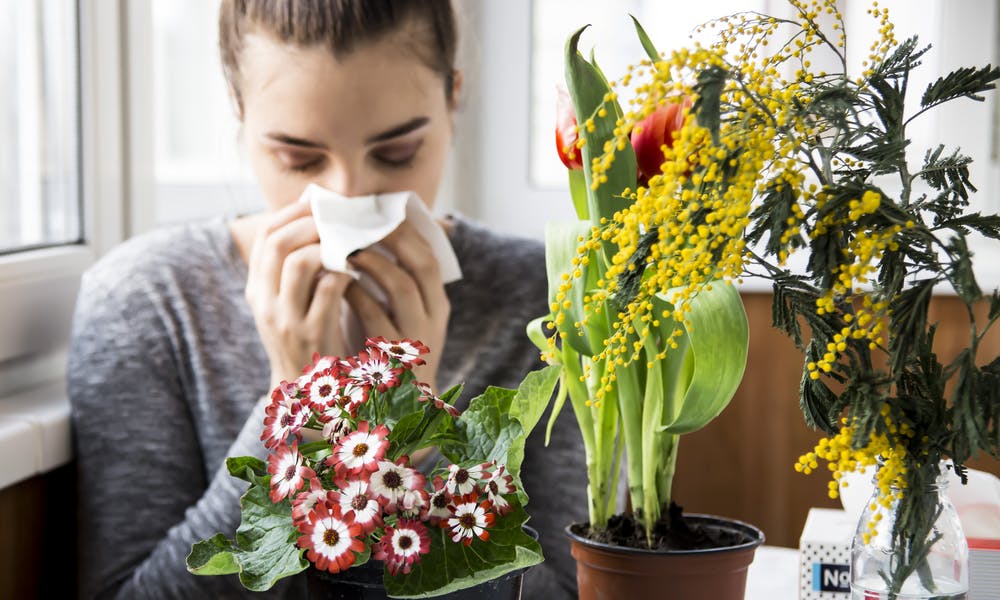Those who suffer from allergies may find it challenging to enjoy heavy pollen seasons like spring and summer. Some people suffer from allergies year-round and have a hard time enjoying holidays like Valentine’s Day. People with terrible allergies may feel like they may never get to enjoy experience receiving flowers or even growing flowers themselves. While a large number of flowers are not hypoallergenic, there are still some classifications that are enjoyable for allergy sufferers.
People who suffer from allergies may find it challenging to enjoy the beauty of flowers, considering they can’t get within 5 feet without sneezing their brains out! In this article, you can expect to find flowers that everyone can enjoy. Here are some flowers that are allergy friendly, and you can learn more about if you keep reading:
- Azaleas
- Begonias
- Carnations
- Daffodils
- Irises
- Geraniums
- Orchids
- Tulips
Let’s dive into this article to discover a bouquet that is sure not to give us a runny nose!
Azaleas
The azalea is a shrub-like plant that has flowering heads. Azaleas, like many other allergy-friendly flowers, strictly rely on insects for their pollination process. The pollen on this plant is very sticky, requiring hands-on removal. The azalea rarely releases any dust into the air.
Although azaleas are allergy-friendly, many parts of this plant are poisonous to humans and household animals. The pollen is the most potent component of this plant. The aroma of this plant may be intriguing, but it is not wise to take a sniff! Azalea flowers are not a great option to send for Valentine’s Day.
Begonias
Unlike the azalea, begonias tend to shed a little pollen here and there, which you should be thankful for! Their features are unlike any other flower. Begonias are one of the few flowers that are found in all parts of the world. Their pollination process relies on insects and the wind. Begonias are a popular household plant because their aroma is very light. You must be close to getting a good whiff. This plant doesn’t require much sun, making it the perfect decoration for the dinner table. However, after being cut, begonias don’t last much longer than a week.
Carnations
Most shrub-like plants offer limited pollen release. However, carnations are not considered a shrub plant. Carnation blooms are usually seen in bundles, meaning they have shorter and smaller stems compared to flowers such as lilies. Knowingly, carnations rely solely on insects such as bumblebees and honeybees for their pollination. Depending on the strength of the wind, sometimes it might catch some tiny bits of the pollen from the flower; however, this is very unlikely.
More fun aspects of carnations are that they last a long-time even after being cut. So, if you’re looking for a bouquet filler, try adding some carnations to fluff it up!
Daffodils
One of the most popular springtime blooms is the daffodil. Daffodils have a trumpet-like center with smooth yellow petals. These flowers produce little pollen altogether. What powder is made from the flower is kept hidden within the center cup of the bloom. The massive flower-head is pointed downward due to the curve of the stem; likewise, this plant appears to be looking at the ground. Daffodils bloom in small groups, making them the perfect flower for every garden. They are sure to watch over your land carefully.
Irises
Irises are commonly known for their bright blue and soft lavender blooms. The unique shape of the flower is an incredible intrigue to any garden or bouquet. The petals of the iris are very rare. Delicate plants such as the iris produce large amounts of pollen; however, the powder is trapped within their long leaves. The petals make it almost impossible for any outside disturbances to impose on removing the dust. Pollination for this plant usually happens after the flower begins to wilt. This flower is the best option for the more sensitive allergies.
Geraniums
Geraniums develop with elongated petals guarded with serrated edges. This flower comes in two different classes: non-hypoallergenic and hypoallergenic. Geraniums are exquisite to look at and are loved by many. Therefore, scientists decided to modify the geranium into an allergy-friendly flower. Although, the development of the geranium is not widely spread yet, the original flower is still friendly to those who suffer from allergies. Most people don’t get the common symptoms of a runny or stuffy nose. Instead, they experience some skin irritation when brushing against the flower.
Orchids
Even though orchids produce an enormous amount of pollen, their pollen has no irritating qualities. If you have allergies, be aware that some experience a slight fever, although it is more likely to experience skin irritation from the sap of the plant. The fluid comes from the middle of the tree-like stems. Orchids are a great choice to use for important occasions like weddings or rehearsal dinners.
Tulips
The most well-known spring bloom is the tulip. Tulips have an upside-down bell shape head that holds a long yellow stem. Insects play a significant factor when it comes to pollination. This flower has a mild pollen count but can produce some skin rashes. Tulips come in a variety of colors and are an excellent addition to any garden!
Summary
If you or a loved one struggle finding flowers that don’t irritate your allergies, then give any of these plants named above a try. Sometimes a person may not realize if they have allergies and continue to bask in the fragrances of springtime flowers. Not all allergies are all harmful, but in most cases, they are just annoying and inconvenient. With any event, be sure to order allergy-friendly flowers, just in case your loved one is unsure of allergies. However, don’t plan on ordering azaleas; they are very poisonous and can be damaging to more than just humans. Consider ordering a bouquet full of carnations, irises, and tulips for a special someone instead. Be mindful of your options the next time you order flowers!
